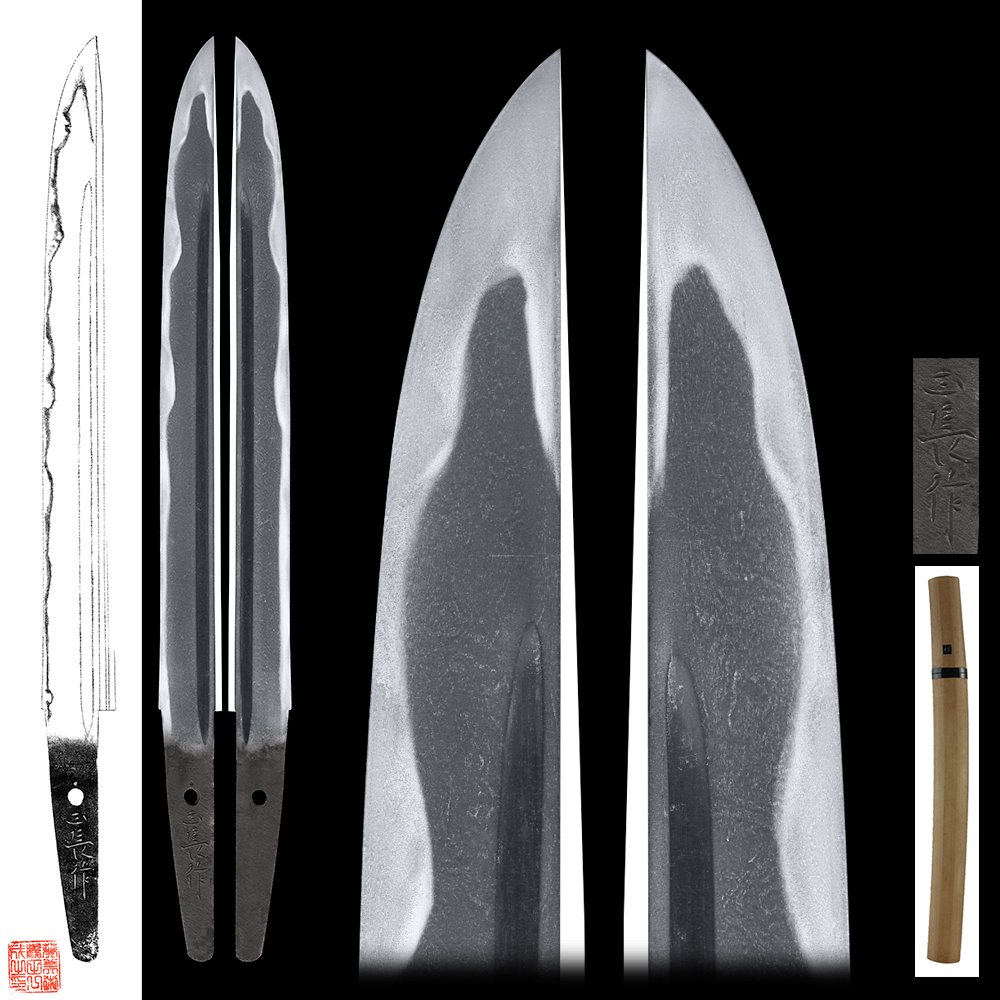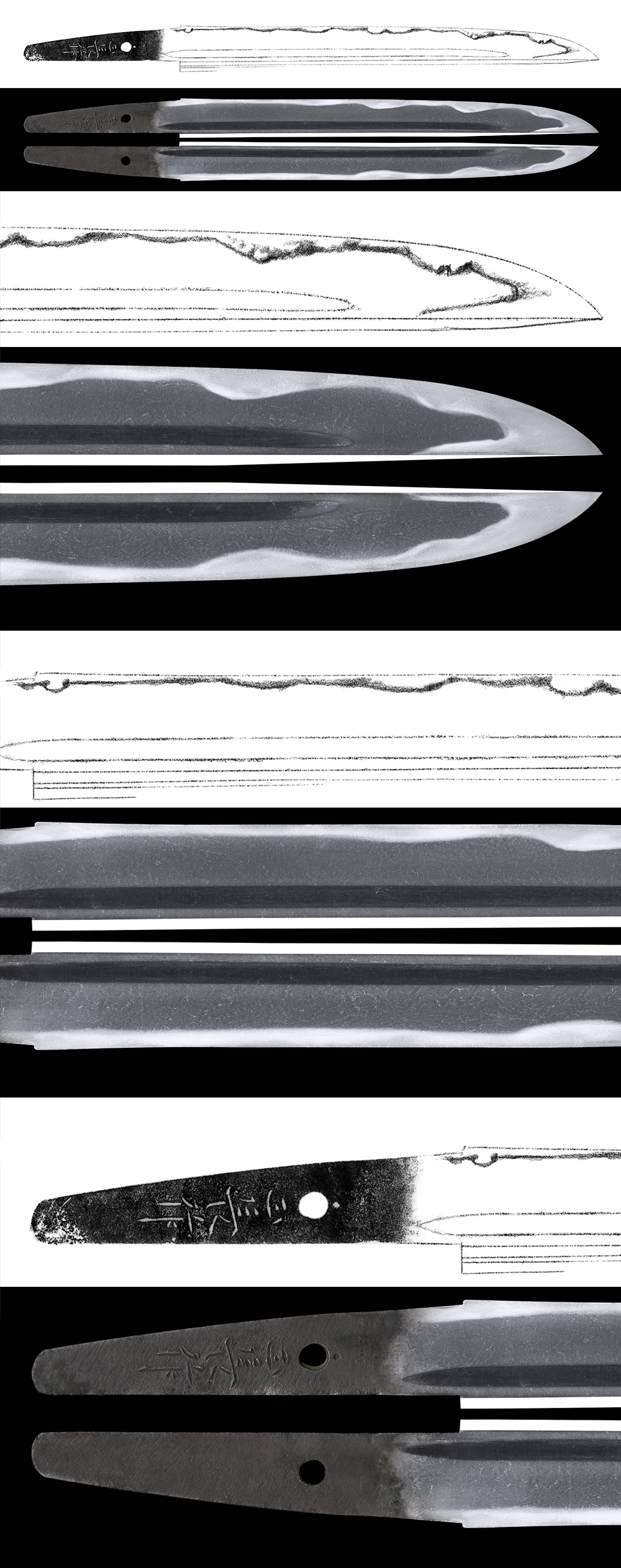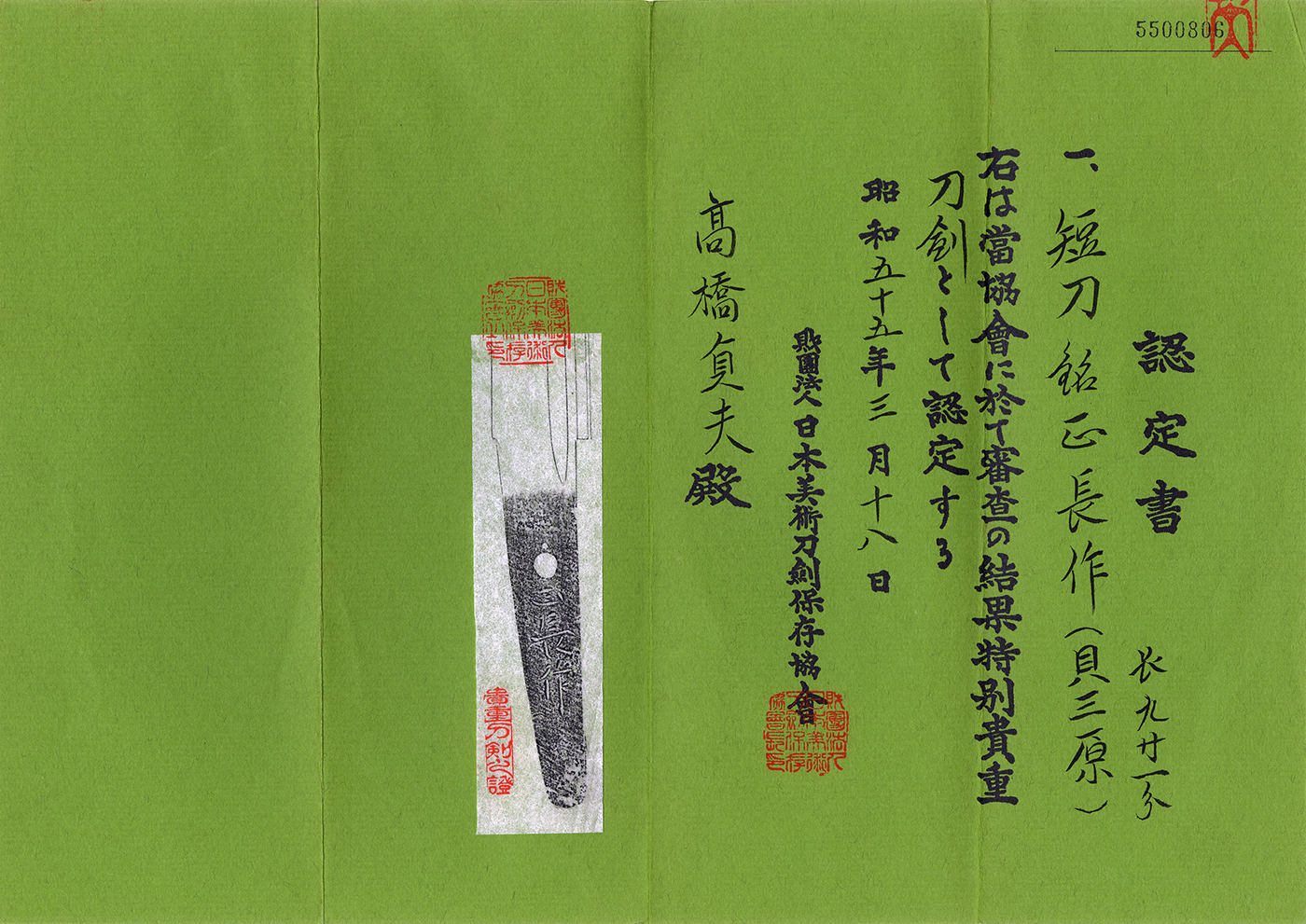Tanto: Masanaga (Kai-Mihara)
2017/01/31
Tanto in Shirasaya, with Koshirae.
Signature : Masanaga (Kai-Mihara)
(We divide 4 sections for each sword as Saijyo saku, Jyojyo saku Jyo saku and regular saku)
This Tanto belongs to Jyo ranking.
The blade was polished.
Blade length : 27.7 cm or 10.9 inches.
Sori : 0 cm or 0 inches.
Mekugi : 1
Width at the hamachi : 2.37 cm or 0.93 inches.
Kasane : 0.54 cm or 0.21 inches.
Era : Later Muromachi period. During A.D.1573~1593.
Shape : Mitusmune shaped Tanto with Bohi engraved on both sides.
Jitetsu : Itamehada well grained with Jinie attached. Condition of Jigane is viewable.
Hamon : Niedeki Notare Gomome-midare Hamon on both sides symmetry, Boshi turning with Jizou shape.
Special feature : Masanaga(Kai-Mihara) is sword smith of Kai-Mihara school, which is related to Bingo Mihara school. Some sword smiths in Kai-Mihara school put the word 'Kai' (shellfish) in thier signature.
Usually the blade forged by Kai-Mihara forged slim blades.
Hamon of most blades are Suguha and some Gonome-midare.
Jigane are Itamehada well grained.
This blade has a symmetry Hamon like Muramasa but condition of Jigane is good with deep Nioikuchi.
Koshirae : Aikuchi Koshirae Higo
Fuchikashira : Cherry blossom engraved on iron plate with gold color.
Saya : Brack Roiro Saya with black lacquer line.
Menuki : Flower engraved on Shakudo plate with gold color.
Historical background: The Battle of Nagashino took place in 1575 near Nagashino Castle on the plain of Shitaragahara in the Mikawa province. Oda Nobunaga's skillful use of firearms to defeat Takeda's cavalry tactics is often cited as a turning point in Japanese warfare.
NBTHK Tokubetsu Kicho token paper
Aoi Art estimation paper : whole Oshigata.





